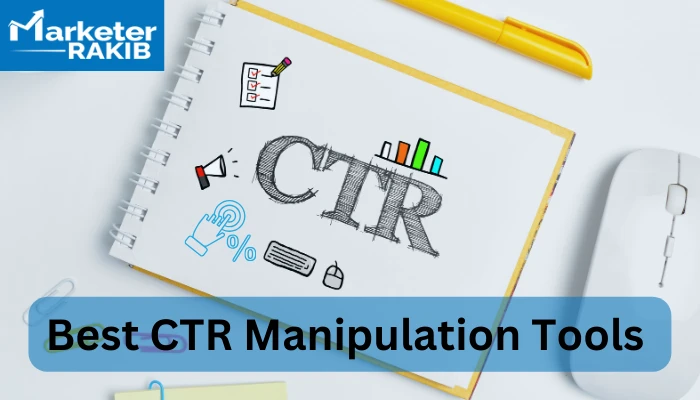Maximizing Organic Click-Through Rates With CTR Adjustment
The optimization of natural click-through prices (CTR) is a nuanced undertaking that pivots on recognizing both customer psychology and efficient material discussion. The landscape is rife with false impressions and oversimplifications about what genuinely drives CTR.
Comprehending Click-Through Fees
Comprehending click-through rates (CTR) is essential for reviewing the efficiency of internet marketing approaches. CTR measures the percentage of individuals who click on a details link or advertisement compared to the overall number of users who watch it. A higher CTR indicates that the material is engaging and relevant to the target market, while a lower CTR might indicate a demand for optimization.
To calculate CTR, separate the number of clicks by the number of perceptions and multiply by 100. As an example, if an advertisement receives 300 clicks out of 10,000 impressions, the CTR would be 3%. This metric is vital for examining different elements of digital marketing, consisting of seo (SEO), e-mail campaigns, and social media sites advertising.
Additionally, evaluating CTR assists marketing experts determine which approaches generate the very best outcomes and which need refinement. By concentrating on boosting CTR, businesses can boost their material's presence and effectiveness, bring about increased website traffic and potential conversions. Recognizing the subtleties of CTR is fundamental for any marketing professional intending to maximize their on the internet presence and make the most of return on investment (ROI)

The Psychology of Customer Actions
Customer behavior is considerably influenced by mental aspects that determine just how people engage with on the internet material. Comprehending these factors is important for optimizing click-through rates (CTR) in natural search results page. Cognitive biases, such as the anchoring result, play a critical role fit customers' understandings. When individuals experience information, their preliminary impacts can heavily affect their succeeding judgments regarding importance and reliability.
Psychological reactions additionally significantly impact user actions. Web content that reverberates mentally can cause a feeling of necessity or curiosity, motivating customers to click. In addition, social proof-- such as customer reviews or scores-- can enhance trust and motivate interaction, as individuals frequently aim to the behaviors of others to educate their very own decisions.
Moreover, the principle of deficiency can drive clicks - CTR Manipulation. Limited-time offers or unique content produce a concern of losing out (FOMO), compelling individuals to act promptly. Comprehending these psychological vehicle drivers makes it possible for marketing professionals to develop even more engaging material that reverberates with their target audience
Efficient CTR Control Strategies
Leveraging emotional understandings can considerably enhance click-through rates (CTR) through targeted manipulation techniques. One of the most effective methods is using engaging headings that stimulate inquisitiveness or seriousness. Phrasing titles as concerns or incorporating numbers can attract more attention, motivating customers to click.
Another technique involves maximizing meta summaries to produce a sense of relevance and immediacy. By plainly laying out the options or advantages given in the web content, you can engage potential viewers and convince them to click. Additionally, making use of power words-- such as "exclusive," "verified," or "totally free"-- can boost the allure of your content.
Visual elements also play an important function. Integrating attractive images or thumbnails can draw customers in and improve CTR. A/B screening various visuals can assist determine which images reverberate ideal with your target market.
Last but not least, ensuring that your web content promises deliverable worth brings about higher CTR. When users regard that clicking will certainly offer them with purposeful insights or solutions, they are more probable to engage. By employing these methods thoughtfully, marketing experts can effectively control CTR to their benefit while preserving honest criteria.
Usual Misconceptions Concerning CTR
A number of false impressions surround click-through rates (CTR) that can lead online marketers to make illinformed choices. While a high CTR recommends that even more users are clicking, it does not guarantee conversions or sales.
An additional common belief is that CTR is an isolated metric. In fact, CTR should be assessed along with various other efficiency signs, such as bounce rate and conversion rate, to obtain an all natural view of project success.
Furthermore, some online marketers think that their website enhancing for CTR alone is enough. Concentrating solely on CTR can lead to clickbait methods that might draw in clicks however fail to involve users meaningfully. GMB CTR Manipulation. This technique can damage brand credibility and cause lower retention rates
Last but not least, there is an idea that CTR approaches are globally effective. The reality is that optimum CTR methods can vary significantly across industries and target audiences, requiring customized methods for various market sectors. Understanding these misconceptions is essential for creating reliable CTR techniques that line up with overarching advertising objectives.
Measuring CTR Success
Although high click-through prices (CTR) can show successful involvement with content, gauging their true success needs a thorough analysis of a number of variables. It is essential to comprehend the context in which the CTR is attained. A high CTR on a misleading title may not equate to purposeful involvement or conversions, ultimately reflecting improperly on the brand name's reputation.
2nd, evaluating the source of web traffic is crucial. Organic website traffic from online search engine can represent a durable content technique, while clicks from pointless resources might show a lack of targeting. Furthermore, gauging the subsequent user habits is crucial; assessing metrics such as bounce price, time invested on web page, and conversion prices can give deeper understandings right into the top quality of the involvement launched by the CTR.

Verdict

The optimization of natural click-through prices (CTR) is a nuanced endeavor that hinges on recognizing both customer psychology and effective web content presentation. CTR determines the percentage of users who click on a details web link or promotion compared to the complete number of users that view it. A higher CTR shows that the web content is engaging and relevant to the target audience, while a lower CTR might signal a need for optimization.
Concentrating solely on CTR can lead to clickbait strategies that might attract clicks yet stop working to involve individuals meaningfully. Additionally, measuring the succeeding individual behavior is vital; analyzing metrics such as bounce price, time invested on page, and conversion prices read what he said can give much Related Site deeper insights into the quality of the interaction launched by the CTR.